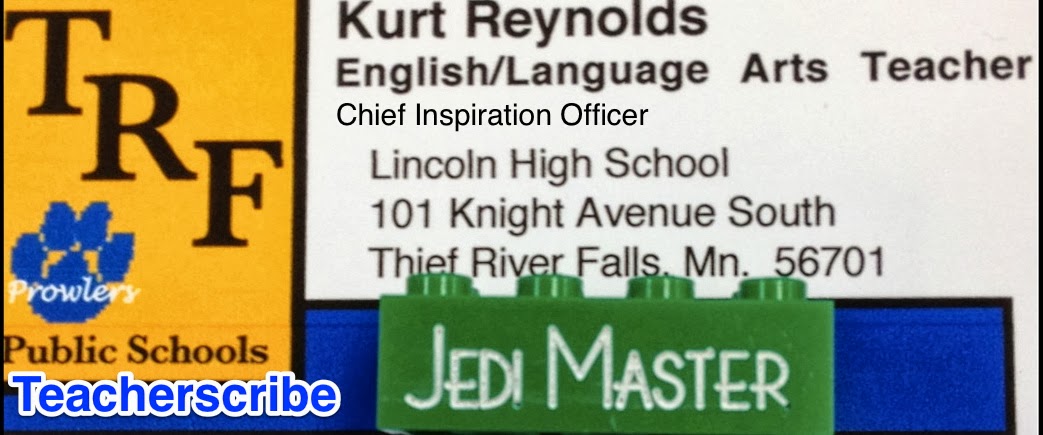Teacherscribe’s Teaching Tip #148
One of those teachers
Kurt Reynolds
It was the first day. Actually, it was the first period of the first day of my first year teaching. I arrived early, 6:30 to be precise. I walked down the empty hall and stopped for a drink from the water fountain across from my room. I refrained from my morning blend Caribou coffee, recalling my high school English teacher, whose breath reeked of Folgers. I was not going to be one of those teachers.
I fished a Spearmint Tic-Tac out of my coat pocket and popped it into my mouth. Then I pulled out my keys and unlocked the door to my classroom.
My schedule hung outside my door: five sections of Communications 10. Soon 28 sophomores would file in and expect me to teach them Communications 10. Whatever that was supposed to be.
Barely three months ago, the principal took me to what would soon be my classroom. There I met the retiring teacher whom I was to replace. We visited briefly before she handed me the teacher’s edition of the tenth grade textbook and said, “Use the this. Start with the first story.”
A week later when I officially moved in, I found a colossal three ring binder with “Communications 10” stenciled on the spine sitting atop my desk. Inside there was a faded yellow Post-It Note that read: “Here is everything you need. Godspeed.”
I recalled that advice and stepped inside the room and flipped the lights on. My desk was organized. I had extra pencils in a canister, just in case a student forgot his or hers. I had a mesh basket for student work. The first story and assignment were in two separates stacks. Next to them was my red grade book. Below that was the blank seating chart for each period. Students in my class were not going to be forced to sit where I wanted them. I was not going to be one of those teachers.
I surveyed the rest of the room. The desks were in clusters. I did not want the traditional rows. Again, I was not going to be one of those teachers.
The day’s assignment was clearly printed in blue Dry-Erase marker on the white board.
What an assignment it was! I spent Labor Day weekend in my room planning. I was not going to simply start with the first story in our textbook - as the departing teacher had advised. The first story was Tom Godwin’s “The Cold Equations,” a classic science fiction tale. It was powerful but long. Maybe a science fiction story would turn a few students off. I wanted to wow them. I wanted them to fall in love with literature. I wanted them to know the power - and joy - of a great story. So I improvised. I scoured one of my college anthologies for one of my favorite stories: “The Harry Hastings Method” by Warner Law.
The story was mature for sophomores, so I spent an hour whiting out every trace of profanity. When students noticed the missing words, I reasoned this would be a great spot for a discussion on editing and censoring. I also hoped students would appreciate that I was thinking outside of the box and injecting provocative stories into my curriculum. I was not going to be boring. I was not going to be one of those teachers! I was going to hit them with a great story right away and keep them interested and wanting to read more great literature.
To accompany the story, I devised a reader-response guide. One thing I vowed not to do was just assign the questions at the end of the story. I had suffered through enough of those assignments in high school. I was not going to put my students through that.
The reader-response guide was based off many I had devised for a Fundamentals of Education class in college. First, I devised a pre-reading question to activate students’ schema. It asked them to reflect on a time in their lives when they were at a crossroads, just like the protagonist in the story. Second, I had during-reading questions designed to analyze the key elements of the story’s plot. Finally, I had a post-reading question, calling for them to write a mini-essay about a time where a situation turned out the exact opposite of what they expected, again just like the climax on the story.
“The Harry Hastings Method” was funny, interesting, creative, and had a great twist ending. The assignment was engaging. Plus, this type of lesson was always a hit with my fellow undergrads who role-played my students for the mock lessons in our Fundamentals of Education class. This would surely captivate my real students.
Was I wrong.

No comments:
Post a Comment